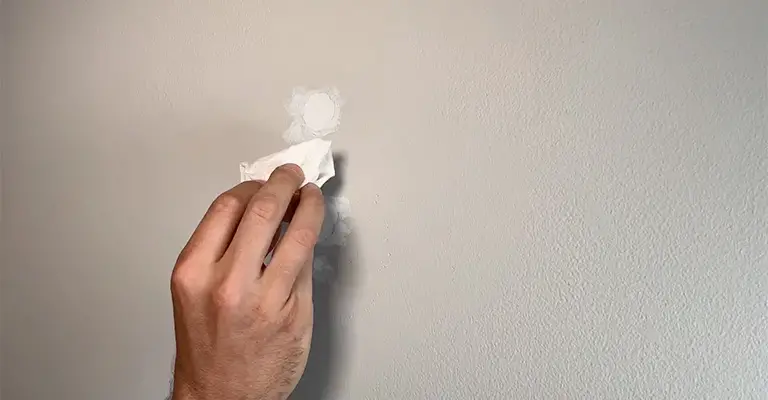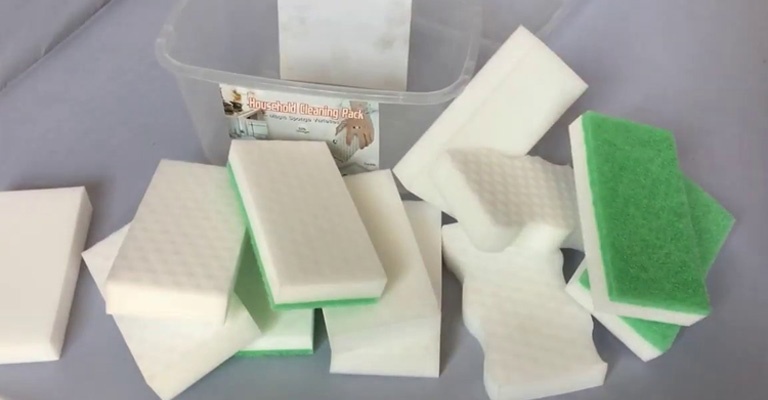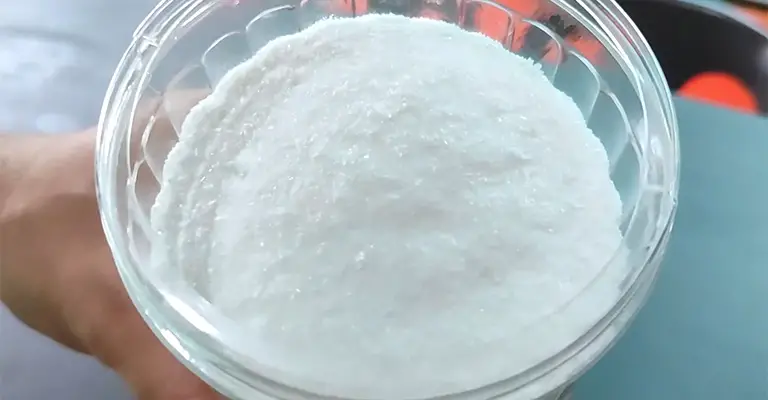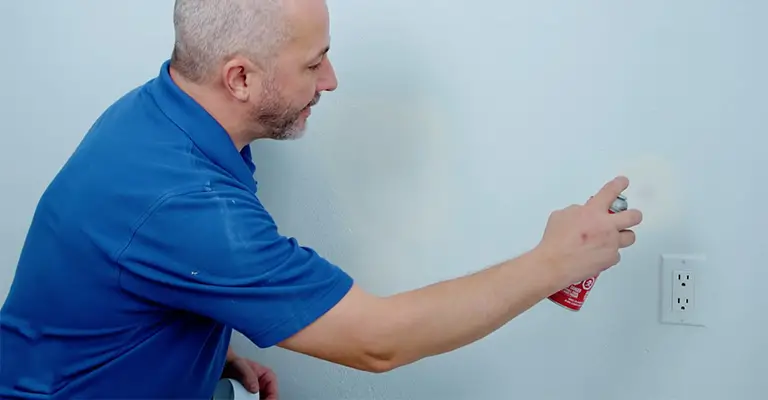Few things are as frustrating as spending time and effort painting your walls, only to discover unsightly shiny spots that mar the otherwise flawless finish.
Shiny spots can diminish the beauty of your painted walls and leave you searching for a solution, whether it’s due to improper application techniques, low-quality paint, or simply the passage of time. Fortunately, you’re not alone in this predicament.
Many homeowners have faced the challenge of dealing with shiny spots on painted walls, and there are effective methods to restore a smooth and consistent appearance to your once-pristine surfaces.
In this blog post, we will guide you through the process of banishing those pesky shiny spots, providing you with practical tips and techniques to revive the luster of your painted walls.
We’ve got you covered, from identifying the causes behind the shine to step-by-step remedies.
What Causes Shiny Spots On Painted Walls?
In most cases, spots are caused by mold, air bubbles, water buildup or a thick layer of paint.
Mold spores may have formed on dry surfaces in a room due to insufficient ventilation and moisture problem, allowing the spores to adhere to the paint, causing shiny spots to begin as these spores irritate the paint.
Shiny spots should disappear as soon as these damp areas are corrected by improving ventilation or removing moisture sources and permitted to dry before being repainted.
The spores from mold can build up on surfaces in a room that was initially dry and then adhere to paint, causing shiny spots.
After fixing damp areas by improving ventilation or removing moisture sources and allowing enough time for the areas to dry before repainting, shiny spots should disappear.
Getting Shiny Wipe Marks Off of Matte Walls

There is no sheen or gloss on matte paint finishes; they dry to a flat, even color after drying. The oil and grease on rags, sponges or hands leave shiny wipe marks on matte paint surfaces.
The walls look unappealing when they are covered with glossy streaks against a lusterless finish.
Compared to non-washable matte paint, washable matte paints are easier to clean. The surface of some matte-finish paints may need to be scuffed to remove the paint. This may make cleaning more difficult.
Things You’ll Need
- Natural sponge
- Well-worn or white rags
- Borax
- White vinegar
- Melamine foam sponge
- Ammonia
- Liquid dish-washing soap
- Bucket
- Rubber gloves
- Eye protection
1. Using Melamine Foam Sponges

- Use plain water to moisten a melamine foam sponge.
- Let the sponge barely be damp after squeezing it.
- Over the shiny marks, gently rub the sponge. There is a chance that paint will come off the sponge if the paint is not washable.
- If you see shiny marks on the wall, wipe gently to remove them.
2. Using White Vinegar
- Combine 1 cup white vinegar with 1 cup warm water.
- Put vinegar and water on a white or well-worn rag and dip an edge into them.
- Using a soft cloth, wipe the shiny marks away. You may get paint on the rag if the paint is not washable. Ensure that you rub gently away any shiny marks.
- Lightly rub a white rag or well-worn rag against the wall to dry it.
3. Using Borax

- Borax, 3 tablespoons and 1 cup water can be mixed together. Combine liquid dish soap and one gallon of water in a bucket or plastic container.
- Protect your hands with rubber gloves. Be sure to mix the cleaning ingredients thoroughly. Place a well-worn rag or naturally occurring sponge in the cleaner and submerge it. Make sure you squeeze out all the excess cleaner.
- Make sure the paint surface is washable by rubbing a hidden area of the wall. Don’t use this cleaning method if the paint comes off on the sponge or rag.
- The natural sponge or rag can be used to wipe the streaks away by making small circles over them.
- Use a rag or sponge dampened with plain water to rub over the area lightly. You should use a well-worn or white rag to dry the wall.
4. Using Ammonia
- You will need 1 cup of household ammonia and one teaspoon of baking soda. Adding 1 gallon of water and liquid dish-washing soap to a bucket. Mix the cleaning ingredients thoroughly.
- Protect your eyes and hands by wearing rubber gloves. You can use a natural sponge or a well-worn rag and wring out the excess cleaner with the sponge or rag.
- You can test the paint surface’s colorfastness by wiping a damp rag or sponge over a hidden wall area. Never wash the walls if the paint color is transferred to the rag or sponge.
- Using the rag or natural sponge, rub the shiny marks gently in a circular motion. Using a damp cloth, wipe away the residue left behind after cleaning with ammonia. Wipe the wall dry with a clean, well-worn rag as soon as possible.
What Are Shiny Spots Anyway?

Sometimes, tiny air bubbles are responsible for spots on a painted wall that shine in the sun. Before completely drying the paint, you should use an old, lightly damp rag to smooth out all the bubbles.
Leaving a small pocket of air between layers will allow pigment to pool and dry, creating “weathering” on shiny or glossy walls.
This effect is more pronounced when the sun shines into high-traffic areas like door frames and window sills (depending on how much sunlight reaches them).
It is also possible for some paints to be glossy by design – these would have been specifically designed with this effect in mind – this can cause additional chatter when applied outdoors.
If you face unwanted reflections, you may want to consider painting your brightly lit rooms with a matte or eggshell finish.
Why Do I Have Shiny Patches Where I Touched Up Paint On My Walls?

Because of different application techniques, this usually results in an additional sheen. In other words, combining spraying, brushing, and/or rolling.
It is likely that the paint was applied with a roller or sprayer, and the touch-up was done with a brush. There will be a noticeable difference between the sheen of different application techniques.
The touch-ups are usually rolled out somehow, so they will hide better if we have rolled everything in some way.
Our spraying process involves rolling the primer or a coat back against the wall. In order to finish up, we back-roll all the brushed locations with a low nap roller. Most of the time, this will effectively conceal the touch-ups.
Sadly, there isn’t anything you can do to make the touch-up look like the first coat. The only option would probably be to repaint the room. It does not matter the brand of paint or what sheen the paint has.
The Bottom Line
Most people don’t know how to properly care for their walls, which can lead to problems in the future. Some of these problems include shiny spots on painted walls.
If you have shiny spots on your carpet, you might have overcleaned or used the wrong cleaning products. You are guaranteed to get a great result if you use a mild, soap-free cleaner and a soft, lint-free cloth to clean your walls.
You should also avoid scrubbing too hard, as this could damage the paint. Whenever you discover shiny spots on your walls, there are a few things you can do to fix them. It is possible to paint the affected area simply by repainting it.
You will be able to cover up those shiny spots and make your walls look brand new again. More severe damage may require you to sand down the area and repaint.
While this will take more time and effort, it will ensure that there are no shiny spots left afterwards.







